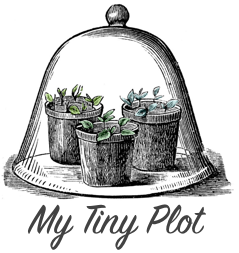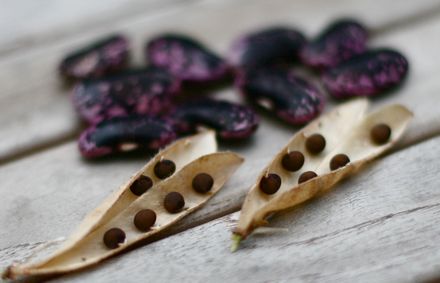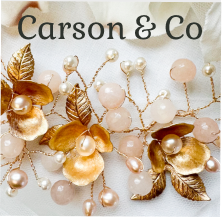Seed Saving
I’ve started to do a bit of basic seed-saving, Carole Klein style. If we’re being completely honest we’re a bit spoiled these days aren’t we?. Garden centres are everywhere and usually open 7 days a week and even the supermarket has at least one carousel of cheap seeds. All very convenient and brilliant for those addicted to seed like you and I.
However, there’s nothing quite like saving your own seed. The excitement of cracking open that crispy casing to see if you’ve got some perfectly dried seed or a pile of rotting mush (sometimes it happens). Seeds are full of promise. At this time of year, when everything is dying down and going a bit brown, collecting seed can be very uplifting. It’s like nature’s saying, ‘it’s okay dude, there’s always another year.’
And who can resist that? Not me… I’m saving Peas, Runner Beans, French Beans, Garlic, Shallots and Sweet Peas on a regular basis now. Some people will tell you that you can’t save Pumpkin seeds because they won’t grow true next year but I might give it a go anyway, just to see what happens. I’m sure in the days before supermarket seeds your average head-gardener would’ve given it a go too.
Anyone else had success with seed-saving? What do you save?
 My Tiny Plot
My Tiny Plot




I’ve saved achocha seed this year. Last year there was Good King Henry and enough dwarf marigold seed to brighten up the entire south east of England :)
Flowers are dead easy – nigella, calendula, marigolds… Sometimes I’m lazy though and just let them self seed then dig the seedlings up and move them to where I want them. Veg aren’t always that easy though – with cross pollination you’re never sure what you’re going to end up with. Great fun trying though.
This year I’ve saved morning glory, purple coneflower, okra, and bell pepper seeds, as well as collecting and beginning conditioning seeds of sweet bay magnolia and trident maple.
Unfortunately, it’s true about pumpkin seeds. If you just let nature take it’s course and let bees do the pollinating, the seeds won’t grow true to type in most circumstances. If you’re trying to maintain a particular cultivar, you’re better off to go with hand pollination.
Here’s the skinny on pumpkin pollination: pumpkins and squash plants are naturally outbreeders – male and female flowers are separated spatially and temporally to minimize the chances of self-fertilization. However, different species of Cucurbita will not cross (with the exception of C. argyrosperma and C. moschata). So if your vegetable patch only has one pumpkin plant in it (or only contains pumpkin plants of the same species and cultivar) you might still be able to get viable seed out of this year’s crop. However, if you have multiple varieties of the same species, you’re probably out of luck. For those who want to save pumpkin and squash seeds, Amy Goldman, author of “The Compleat Squash”, recommends either hand-pollination or isolation of plants (by a distance of at least 1/2 mile) from other varieties with which they could cross.
On the other hand, you could just plant the seeds and see what comes up… maybe you’ll accidentally discover a new hybrid!
I love that photo :)
Just to build on Devons’ post. In general, all plants within the same species will cross pollinate, although some will do it easier than others (as in pumpkins). For example, if you have a buttercup pumpkin (from the maxima species) and a butternut pumpkin (from the moschata species), they will not cross pollinate and should come true to type.
Hand pollination is the way to go. You can rip off the male flower, when it is ready and rub this against the female flower (which can be recognized by the swollen base) when it first opens (usually early in the morning). The female flower is then sealed with masking tape to prevent further cross pollination.
Seed saving can get ridiculously complicated when you read about it. For the home gardener the best bet is the ‘suck it and see’ approach. It is the easiest way to learn and if you fail, who cares?
I love growing things to seed because I love seeing the whole life cycle of my veggies. It is an awesome thing. I only started doing it this year but If I keep doing it, year after year I will have new varieties which are adjusted for our climate. It would be a nice thing to pass down to any green-thumbed children, seeds that you have developed over a lifetime. (Also, it will encourage them to eat real food long after I am gone if they have the “burden” seed saving family heirlooms)
I save leek and French bean seed, but I’m expanding my range. The key is to find open-pollinating varieties, ie not F1 ones – which are either sterile or won’t come true (ie like their parents). Am experimenting with potato seeds next year; I would love to grow my own special potato varieties that nobody else has!
I was surprised to read the comments about pumpkin seeds, and whilst I’m sure they’re all entirely accurate, I’m wondering how the heck I managed to grow 6 magnificent pumpkins this year from seeds saved last season! I’ve never grown them before but was given a pumpkin by a fellow allotmenteer last autumn and couldn’t resist sowing the seeds. I started them off in loo roll inners in the greenhouse, then planted them out in loads of ‘muck’ and kept them watered. I didn’t do anything to pollinate, but always have lots of bees as I also grow flowers to attract them. I’ve just cooked the first one and, of course, kept the seeds but now I’m wondering if my luck will last a second season…
I’ve saved seed from my sweet peas, I hope they come true because it was a lovely smelly variety. I’ve also saved the seed from the weeds I liked – poppies and love in the mist – not that they really need my help to propagate.
Thanks for the pumpkin advice. I’m lucky, I’m only growing Turks Turban this year so I think I’ll give the seed a go!
I’m really getting into saving my own seed as well. Some of the packets are really expensive, but when I have to sort out some tiny little seed from the chaff.. I appreciate why.
Rather annoyingly, I forgot I was supposed to be saving some broad bean seeds and ate them all. I’m patiently waiting for some leek seeds to ripen. I’ve just planted some Dierama and Cerinthe seeds as I was tidying up. I’ve only just got into the seed saving and cuttings side of things, but it’s so rewarding, not to mention cheaper!
I’ve saved tomato seed in the past, but like HappyMouffetard above, I ate all the tomatoes this year without saving any! Doh….
However, if anyone wants to have a go, it’s really easy. Just take a good, healthy tomato, make sure it’s ripe, cut out the seeds and spread them thinly and gently onto a piece of kitchen paper. Allow them to dry on a windowsill for a few days, then simply fold them up in the kitchen towel, place them in a brown paper bag or similar, and label (of course!). Next year, just tear off a bit of the kitchen towel with enough seeds on it, place it on top of some seed compost in a pot, cover it lightly with some more compost, water and watch them grow!
Your blog kinda rocks and you are really lucky tohave a tiny plot of your own, I found you blog about 2 months ago and its an addiction your pea tips are a real help. I’ve been getting a lot of help and tips from there; although climate in Pakistan is way hotter and favorable to grow vegetables and i’ve been trying Permaculture and it seems to work would love to here from you about Permaculture and if you’ve ever tried it. Hehe submitted again cos my URL was not working in the previous one. :)
I’m saving seed for the very first time this year. I’m just going easy…beans and tomatoes. I hope it works!
Don’t let them tell you not to save pumpkin seeds. We’ve had “volunteer” pumpkin for the last few years out of our compost pile. Every year we seed and eat them, tossing the seeds into the compost and tada pumpkins come spring.
We’ve also saved Scarlet Creepers, I think they are what you call runner beans, and we had volunteer tomatoes this year from two garden beds and a compost heap.
Tomato seeds actually save much better if you ferment them first. In fact, most seeds I’ve found save much better if you ferment them-it helps kill off any unhealthy fungi or bacteria and helps the seed get a head start the next year. To ferment, all you have to do is immerse the seeds, pulp and all, in enough water to keep them below the water line and then some to combat evaporation. Let them sit for 3-5 days until they smell pretty awful then rinse them through some mesh to get the fermented pulp off. Dry on paper towels and – voiala – you have seeds ready to go for next year. I use this method for all my nightshades and curcurbits, though it’s obviously not required for beans or peas-just anything that starts out pulpy and wet.
Regarding pumpkin seed saving…We grow pumpkins every year and haven’t bought seed since I don’t know when. Actually several years ago we tossed an unused pumpkin on a burm in the fall (zone 5a) and what do you know? Pumpkins all over the place the following year. A dozen pumpkins in about a 10×10′ area. Over the years the skin has become thinner with no meat to cook, so this year I plan on planting a new crop, after a load or two of great compost, but all things considered, it’s been a fun, FREE surprise every year.
I found a packet of sweet pea seeds from 2001, when I was tidying out a cupboard, and planted about a dozen in a pot with a plastic lid. I was surprised to see that 3 of the seeds have germinated and I have now transplanted them in a larger pot with 3 bamboo canes for them to grow up. I thought about throwing the seeds away as they were so ‘out of date’ but I don’t like to waste anything and tried them out and I’m glad I did!!
I also wash out and save the clear plastic lids that meat comes in from the supermarket -they make great cloches for my seed trays, and old plastic bottles are cut in half, the bottom half is used as a cloche for my plant pots and the top half is used as a filter funnel when I need one!! Cheers Rich.
I’ve grown veg and saved seed for years. Squash (pumpkins) will cross but you’ll get edible fruit for a couple of generations, and the seed keep for several years. I’ve been keeping a purple climbing french bean for years. It never goes stringy even when huge and I haven’t found a better commercial one yet. I was also given some climbing, hardy (south west england) peas that seem to stay true and grow to 7′ to 8′. Marigolds (petals in salads) nasturtiums (ditto flowers),opium poppies (seeds in cakes) sweet william (flowers in vases!), all seed all over the place. I save a highly scented purple sweet pea, also chard, runner and broad beans. All will slowly deteriorate/revert to wild if you do it in an amateur ad-hock way, like I do, so every year buy a replacement for one or two varieties. Great fun and money saving!